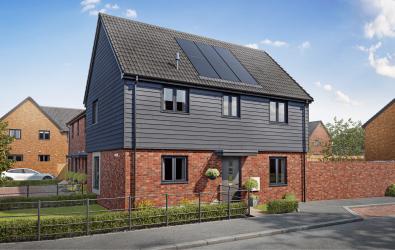As of today, the first budget from a Labour government in 14 years is officially in effect, bringing with it a raft of changes designed to fix what Rachel Reeves - the country’s first female Chancellor - describes as a ‘dire’ situation. With the main headline in the run up to the budget focused around ‘difficult times ahead’, it’s unsurprising that the property industry was bracing for the worst. Below we explore the property-related aspects of the Autumn Budget and how it’ll impact homebuyers going forward.
A broader look at the Autumn Budget
Before we jump into the specifics, let’s take a look at the bigger picture around the Budget. The key takeaway is that taxes have been raised by around £40 billion - one of the most significant amounts in recent history and at the top-end of economist predictions. Employers have taken the brunt of the hike, with rising National Insurance contributions and lower thresholds for those contributions making up £25 billion of the total.
The remaining revenue will be achieved via both borrowing and other policies - such as closing inheritance tax loopholes - that we’ll look into shortly.
In her report to the Commons, the Chancellor highlights that this approach is vital for stimulating growth in the short-term. This is reinforced by data from the Office for Budget Responsibility (OBR), which suggested that real GDP growth would increase by 9.5% between now and 2029 due to these new Labour policies.
So, how does property fit into these plans? And what does it mean for homebuyers?
Huge stimulus package for affordable housing
One of the key property points of the Budget was the inclusion of £500 million earmarked for the Affordable Housing Programme - just one part of a larger package worth £5 billion.
This initial investment is set to deliver 33,000 new homes, boosting supply at a time when the market is lacking stock, whilst also laying the foundations for Labour’s manifesto pledge to build 1.5 million new homes during their tenure.
Several sites have already been designated for development alongside plans to further increase the amount of affordable housing available by reducing Right to Buy discounts throughout the country.
Capital Gains Tax for residential property remains unchanged
Going into the Budget, many experts speculated that a change to Capital Gains Tax (CGT) was on the cards. Whilst the majority of focus was on the main rate of CGT - which includes shares and other asset vehicles - some in the property industry feared it may also mean a hike in residential property CGT.
As expected, the main rate of CGT has increased, from 10% (basic) and 20% (higher) to 18% and 24% respectively.
This brings it in line with the current residential property CGT rates, which are unchanged. Good news for homeowners looking to sell…
Second Home Stamp Duty surcharge increases
But unfortunately, just more bad news for investors. The Stamp Duty land surcharge for second homes has increased from 3% to 5% as of today.
Before this budget, anyone buying a second property (i.e a property in addition to their main residence) would pay an extra 3% of the property’s market value on top of standard stamp duty rates. As of today, they’re now paying 5%. This means the current Stamp Duty bands for a second property are as follows:
£0 - £250,000 = 5% SDLT
£250,000 - £925,000 = 10% SDLT
£925,000 - £1,500,000 = 15% SDLT
£1,500,000+ = £17% SDLT
The reasoning behind this change is that it’ll support both first-time buyers and those moving home, encouraging a healthier property market for homeowners. The Chancellor also confirmed that the current Stamp Duty threshold will remain in place for first-time buyers and homebuyers until April 2025.
Investment into ‘Warm Homes Plan'
As part of their announcements regarding the energy sector, Labour is also investing £3.4 billion into a ‘Warm Homes Plan’ over the next three years, specifically designed to improve household energy efficiency and reduce fuel poverty.
Described as the “first step” in their manifesto pledge of committing £13.2 billion towards these issues, the money will support fuel-poverty schemes and identify ways of improving both quality of life and energy efficiency for homeowners.
This scheme also goes hand-in-hand with the ‘boiler upgrade scheme’, which will support a wider release of heat pumps for homes across England and Wales over the next year.
What does the Budget mean for homebuyers?
So the important question, what does this mean for you? If you’re a first-time buyer or you’re looking to move home - the honest answer is not much.
Labour continues to focus on increasing housing supply and sees both first-time buyers and existing homeowners looking to either upscale or downsize as a vital demographic for reinvigorating the housing market.
While this will be hindered by Stamp Duty thresholds lowering in April next year, once again making purchasing a home more prohibitive, it’s yet to be seen if Labour will follow through with this plan.
As it stands right now, many experts believe a full-scale reform to Stamp Duty would be more beneficial for stimulating the market, driving revenue through transactions and a healthier economy, rather than through this specific tax.
Likewise, inheritance tax rules remaining the same until 2030 is a clear indicator of Labour’s acknowledgement of how much family support can help younger homebuyers.
Ultimately, the good news for homebuyers is that the Government seems to be pushing for more homes and, in particular, more affordable housing. Increased supply means more transactions and revenue, which in turn means higher growth and significantly more opportunities for us all to buy our dream home.
If you want to know more about the homes we have available to buy through affordable home ownership schemes, you can do so here.






